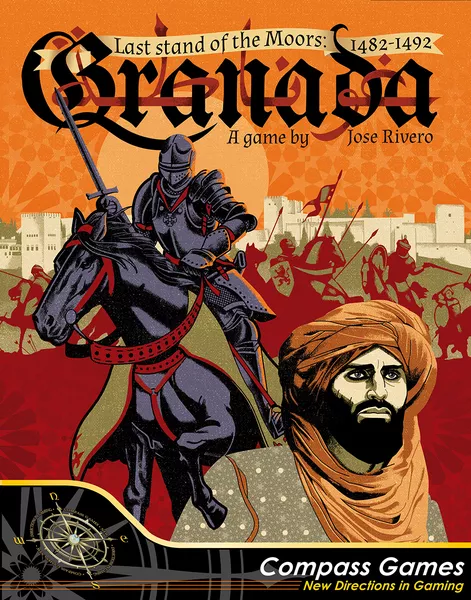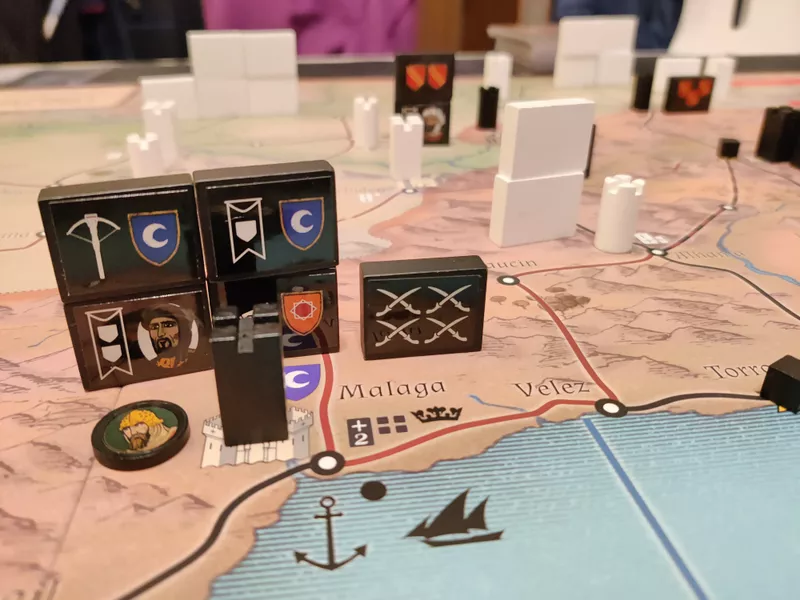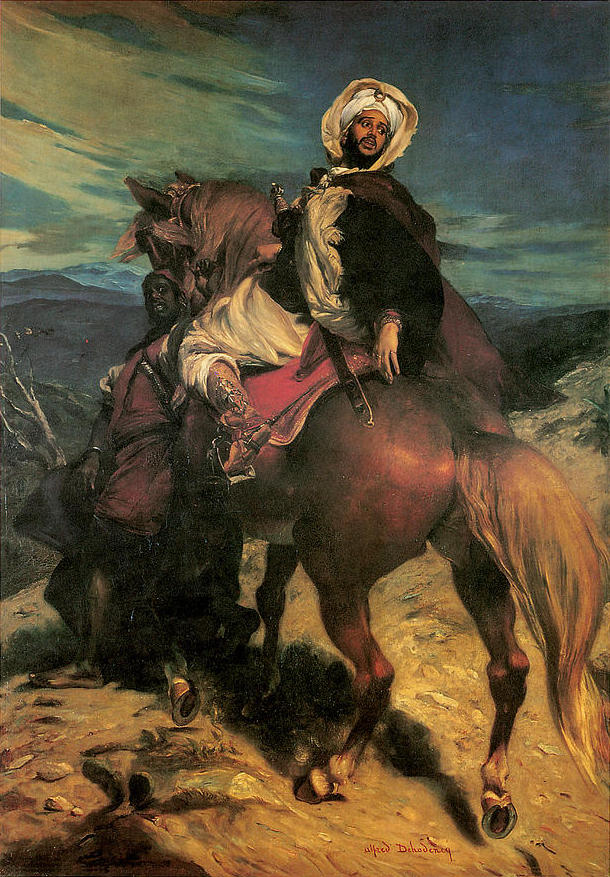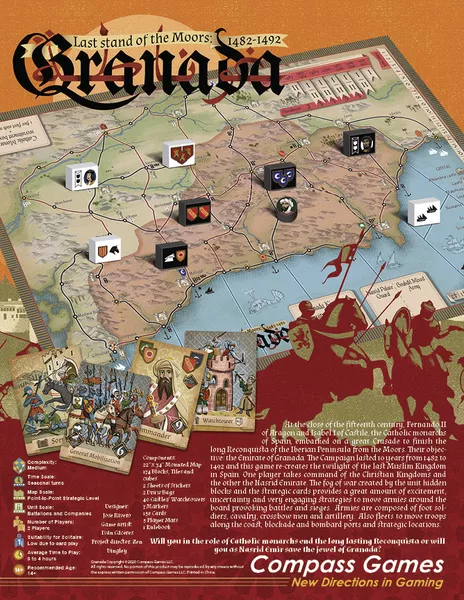A Critical Analysis of Granada: Last Stand of the Moors

Introduction:
Granada: Last Stand of the Moors – 1482-1492 brings players into a critical era of Spanish history – the end of the Reconquista. This review delves into the game’s design, examining its historical accuracy, gameplay mechanics, thematic communication, and companion book.
Gameplay Overview:

This two-player medieval board game focuses on the Reconquista, employing board movement, secret units, and card-driven actions. The element of bluffing, heightened by uncertainty about opponents’ hidden unit cards, adds excitement. The inclusion of the tricky character Boabdil introduces a playful hide-and-seek dynamic, enhancing the overall enjoyment.

An engraving of Muhammad XII, a.k.a. Boabdil, ultimate ruler of the Nasrid emirate of Granada

The Farewells of King Boabdil at Granada by Alfred Dehodencq (1822–1882)
Historical Authenticity:

The Alhambra – photo: Bryan Hemming. Click to enlarge. The Alhambra is a palace and fortress complex located in Granada, Andalusia, Spain. It is one of the most famous monuments of Islamic architecture and one… (If you want to read about it click here)
For a historical board game, accuracy is crucial. Granada successfully aligns with historical details, faithfully representing the conflicts between Moors and Christians from 1482-1492. The game adeptly incorporates struggles for control, religious differences, and political complexities of the era while maintaining a solid historical core, even with slight modifications for gameplay purposes.
Game Mechanics:
Effective game mechanics are vital for an enjoyable experience. Granada strikes a balance between strategic depth and simplicity, involving resource management, diplomatic choices, and military planning. The integration of cards and tokens for resource handling adds complexity without overwhelming players. Clear explanations for turns, battle resolutions, and victory conditions contribute to smooth and accessible gameplay.
Communication of theme:
In the storytelling aspect, Granada excels by leveraging the rulebook as a guide and storyteller. The rulebook’s straightforward instructions immerse players in the historical context, emphasizing the significance of their choices. The “War For Granada” section further enriches the gaming experience with additional historical insights, fostering player engagement.
Influence of Sekigahara: The Unification of Japan:
As the creator mentions in the rulebook, Granada is like a successor to Sekigahara and owes it a lot. But, the game’s abundance of options, including numerous cards and armies, differs from the simplicity that makes Sekigahara beloved. Despite varying opinions on its complexity, Granada exhibits innovative ideas, particularly in Boabdil’s mixed army concept. If all these features excite you and you want to buy a copy of it, you can find it here.
Companion Book:

Having delved into the “The War for Granada 1482 – 1492” chapter inside the rulebook and comparing it with the board game experience, I find that the historical narrative provided aligns well with the thematic elements presented in Granada: Last Stand of the Moors – 1482-1492. The comprehensive overview of the Granada War, including the reasons behind the conflict, the composition of the armies, and the decisive techniques employed, greatly enhances the players’ understanding of the historical context.
The detailed account of the Muslim and Christian forces, their strategies, and the evolving dynamics of the war accurately reflects the complexity portrayed in the game. For instance, the emphasis on the various military units, from the urban levy and foreign mercenaries to the specialized Berber riders and the Christian army’s formidable artillery corps, resonates with Granada’s diverse gameplay elements.
The description of key events and turning points, such as the sieges, battles, and political maneuvers, echoes the narrative woven into the game’s mechanics. The incorporation of artillery as a decisive factor in breaching fortifications is notably reflected in the game’s emphasis on resource management, including the logistical challenges faced by both sides.
Additionally, the mention of Boabdil’s intriguing political alliances and personal conflicts mirrors the thematic richness brought out by the hidden unit mechanics and the playful dynamics introduced by Boabdil’s character in the board game. The narrative of shifting allegiances, the role of diplomacy, and the significance of key leaders align with the strategic choices players make during the gameplay.
On a personal note, the companion book provides valuable historical insights that deepen my appreciation for the thematic accuracy of the board game. The attention to detail in capturing the nuances of the Granada War adds layers to the gaming experience, making it not only entertaining but also educational. It reaffirms my view that Granada successfully balances historical authenticity with engaging gameplay, offering players a truly immersive journey into the last stand of the Moors. If you’re interested in exploring the companion book, check their website or you can download the PDF file directly from here.
Conclusion:
Granada: Last Stand of the Moors – 1482-1492 stands out as an engaging board game capturing the essence of the Reconquista. Balancing historical accuracy, effective mechanics, and thematic storytelling, the game offers an immersive experience. Whether a history enthusiast or a board game lover, Granada provides a journey into the past, exploring the intriguing facets of the Reconquista.